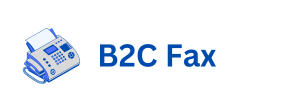What if I told you that you can achieve excellent customer service, increase loyalty and even boost revenue with one simple question – would you believe me?
Welcome to the world of Net Promoter Score (NPS).
You’ve seen those one-question surveys pop up when browsing the web or in your emails .
Asks how likely you are to recommend a company, product or service, and provides a scale from 0 to 10 for your response.
net-promoter-score question
You may even already use them to get a gauge of how much your customers like what you offer.
But NPS is much more than just a question.
Measure customer experience and also drive business growth by identifying pain points in your customer experience, amazon database what they like about you, and the likelihood that they will recommend you and make additional sales.
We’ll show you the 11 key things you need to know about Net Promoter Scores
Let’s get started.
What is a Net Promoter Score?
This new metric abandoned lengthy customer satisfaction surveys and focused on one key loyalty-based question:
“How likely would you be to recommend us to a friend or colleague?”
Rated on a scale of 1 to 10 (with 10 being most likely), responses can be classified into three main categories: Promoters, Passives, and Detractors.
nps-formula
Promoters: They are loyal fans and will help drive business growth. The more promoters you have, the better the customer experience you offer.
Passives: These customers are neutral: they like what you offer, but they are not necessarily loyal to your business.
Detractors: These are your less enthusiastic customers. They are more likely to share negative word of mouth.
NPS Open Questions
NPS tells you how your customers feel about your business.
Adding a qualitative question alongside your Net Promoter Score question allows you to: explore why people feel a certain way .
Traditionally, how to download telegram videos and media open-ended questions asked why a particular score was given.
See how customers are asked to explain their ratings in the example below.
main reason for scoring
Increasingly, companies are using customized follow-up questions in response to a given score.
The following table shows the different types of questions asked of each respondent.
Promoter (9 or 10) What did you like about your experience with us?
Passive (7 or 8) How can we improve your experience?
Detractor (0-6) Tell us what was missing from your experience with us.
Answers to open-ended questions are critical to identifying pain points, but they can also be a great source of social proof .
Positive feedback from promoters can be turned into testimonials for your website or social channels, for example.
Why is NPS important?
Two decades after its introduction, the Net Promoter Score (NPS) remains one of the most important ways to measure loyalty.
We have defined 4 reasons why NPS remains a core customer experience measure :
1. Measure customer loyalty
The higher the score, the happier your customers are.
Promoters, those enthusiastic customers who will recommend your business to their friend or colleague, indicate how loyal your customers are at that moment.
“We will focus our organization on what we call the Net Promoter Score, which is much more than just an indicator of customer satisfaction,” said René Obermann, former CEO of T-Mobile International.
Plus, the simplicity of the survey allows you to conduct research on a regular basis to compare loyalty and begin tracking trends.
2. Faster information
The Ultimate Guide to NPS As a single-question survey, you’re more likely to get a higher response rate than longer surveys. It can also be analyzed and shared faster, b2c fax giving information to those who need it.
The completion rate of Trustmary NPS surveys is usually the same as the opening rate. In other words, the NPS survey is so easy to complete that almost no one leaves it unfinished once they open it.


